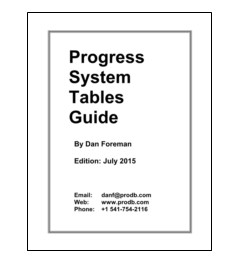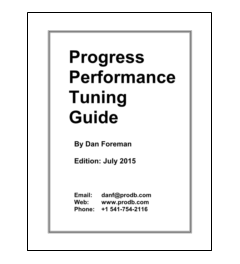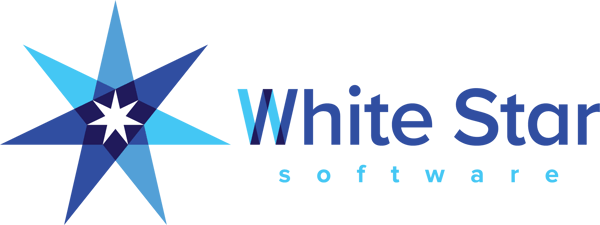Book by Dan Foreman
Progress system tables guide
Virtual System Tables (VST’s) were added in V8.2. VST’s provide access to data that was previously only accessible through the promon utility. The Progress documentation gives a basic description of each Virtual System Table (VST) but is generally inadequate for anyone attempting to do so serious work with VST’s. This publication also has information about the Metaschema, SQL Shadow Tables, and more.
Progress System Tables Guide
Virtual System Tables (VST’s) were added in V8.2. VST’s provide access to data that was previously only accessible through the promon utility. The Progress documentation gives a basic description of each Virtual System Table (VST) but is generally inadequate for anyone attempting to do so serious work with VST’s. This publication also has information about the Metaschema, SQL Shadow Tables, and more.
Topics include:
- VST implementation

- Performance overhead of VST’s
- VST bugs
- VST comparison: V8, V9, V10, and V11
- Writing programs that use VST’s
- Undocumented VST fields
- VST indexes
- VST record counts
- VST’s that can be updated
- Stale VST Data
- Metaschema table definitions
- SQL tables and shadow tables
Pages: 226
Topics include:

- VST Implementation
- Performance Overhead of VST’s
- VST Bugs
- VST Comparison: V8, V9, V10, and V11
- Writing programs that use VST’s
- Undocumented VST fields
- VST Indexes
- VST Record Counts
- VST’s that can be updated
- Stale VST Data
- Metaschema Table definitions
- SQL Tables and Shadow Tables
Pages: 226
Topics include:

- Database Design & Indexing
- Efficient Coding Techniques
- Covers versions 9, 10 and 11 (V6-V8 is available by special order)
- Real Life Benchmarks
- 4GL/ABL Performance
- Client/Server
- Performance Monitoring
- System Administration & Disk Utilization
- Quick Tune-Up Checklist
- Database Startup Options
- 4GL/ABL Client Startup Options
- Debugging Application Performance
- SQL
Pages: 469
